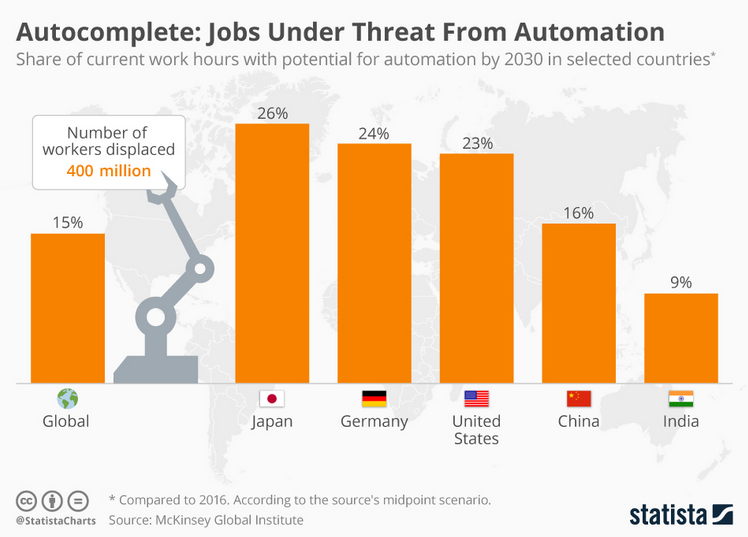About 400 million workers globally could be displaced by automation by 2030, said a report from McKinsey Global Institute. Conducted by using a general equilibrium model to factor in the economic impacts of automation on employment and unemployment and with conclusions drawn from the midpoint of all possible scenarios, the report shows types of jobs that are most likely to be created and lost with future automation.
Those 40 million workers displaced represent 15 percent of all global work hours. In the United States, the report estimates that 23 percent of all work hours have the potential for automation.
“Our key finding is that while there may be enough work to maintain full employment to 2030 under most scenarios, the transitions will be very challenging—matching or even exceeding the scale of shifts out of agriculture and manufacturing we have seen in the past,” the report said.

The complete report puts some of these numbers in context with the way the workforce has gradually shifted away from agriculture in many countries. Japan is facing the most change in terms of the number of work hours which could possibly be performed by automated systems instead of workers.
Another report recently noted that employers are more concerned about automation through job loss than business leaders are.
On the bright side, jobs with the highest percentage job growth net of automation include skilled engineers and scientists, IT professionals and other technology specialists, and builders.
Filed Under: Industrial automation




